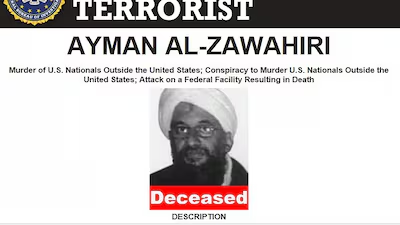
An FBI poster of Al Qaeda chief Ayman Al Zawahiri after he was killed in a US counterterrorism operation this week. AFP
An FBI poster of Al Qaeda chief Ayman Al Zawahiri after he was killed in a US counterterrorism operation this week. AFP
Has Al Zawahiri's killing exposed the Taliban's double standards?
